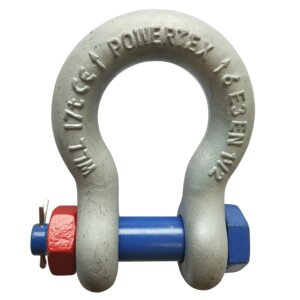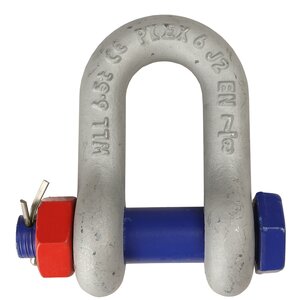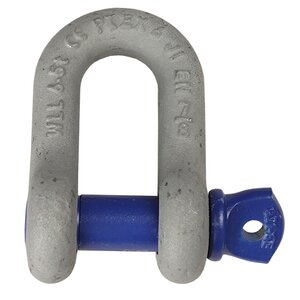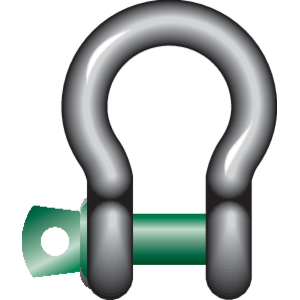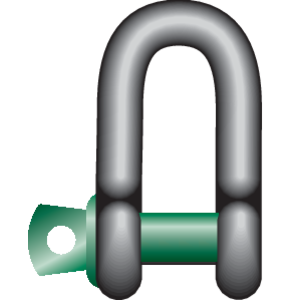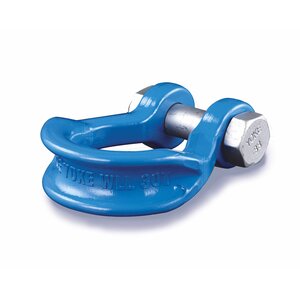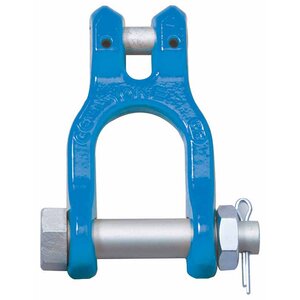
How to choose the correct shackle
In the world of lifting and rigging, the simple shackle is an essential component that provides great strength and versatility in many different applications. The shackle is also available in many designs and models, so choosing the right shackle for the specific lifting needs requires careful consideration. Through our Lifting KnowHow, we guide you to make a well-considered choice before purchasing your next shackle.
Understand the difference between the different variations of shackles
A shackle generally consists of a curved part and a pin, the part you "close" the shackle with. The pin can be either a screw pin or a safety bolt with nut and steel cotter pin.
Check out the categories
We divide shackles into two main categories: bow shackles, also called H-shackles, and D-shackles.
Bow shackles have a rounded shackle arch and, thus, a larger contact surface. They are suitable for joining two slings in the hook of a lifting device or for lifting slings with several parts. For use with textile slings, bow shackles with an extra-wide bow, the so-called wide body shackles, are recommended.
D-shackles have a shackle bow with straight sides, which makes them suitable for single-part slings and straight-lift loads.
Design
Do you often need to move your shackle, or must it be part of a more permanent connection? For use in a permanent connection, a safety bolt shackle with nut and pin is the best choice, while a screw pin model is preferable if the shackle needs to be removed regularly.
Materials
Shackles are available in different materials, such as stainless steel, high-strength steel, forged alloy or drop-forged steel (pay attention to steel grade).
Factors that influence the choice of shackle
The prerequisite for being able to choose the best shackle for your task largely depends on defining these factors:
Load requirements: Consider what load capacity, working load limit (WLL) and the special forces the shackle must be able to handle. Please choose a shackle with a WLL that exceeds the intended load to which it must be subjected.
Environmental conditions: In which environment must the shackle be used? In corrosive environments, stainless steel shackles are preferred, while alloy steel shackles are suitable for heavy-lifting applications.
Application specifications: Here you must assess factors such as load angle, compatibility with other lifting components included in the application and frequency of use. If your shackle is not to be used for lifting tasks, you can advantageously choose a commercial shackle.
Marking
For a shackle to be approved for lifting, it must be clearly marked according to standard, CE, WLL, size, class and batch number for traceability, as well as meet the performance requirements of EN 13889 and/or US Federal Specification RR-C-271 Type IVA Class 2, Class A.
Shackles without these markings are not approved for lifting.
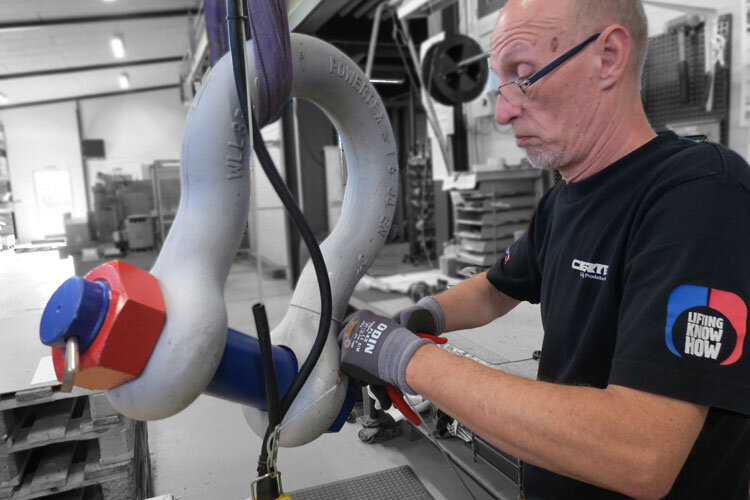
Best practices for shackles
As with all lifting equipment, some points should be observed.
Regular inspection and maintenance
Visually inspect the shackle regularly for wear, corrosion or signs of damage. If in doubt, put the equipment away with clear markings and have it inspected by a qualified person who can replace or repair the equipment to maintain safety standards. In addition, always comply with the statutory service inspections.
Load testing and compliance
Conduct load tests to ensure the shackle can handle the expected loads. Comply with standards and regulations regarding the use of lifting points. CERTEX Danmark A/S offers load testing.
Correct installation
Ensure that the shackles are installed correctly and according to the manufacturer's guidelines. Improper installation can lead to accidents during lifting operations.

 Do you have any questions?
Do you have any questions?
If you have any questions, please send us a message and we will be happy to help.
Rental of shackles
In our rental department, you can rent large shackles, as well as cargo shackles with a wireless display.
Service inspection
Do you want a service inspection of your lifting gear, fall protection equipment or cranes? Read more about this and order an inspection.
Correct use of lifting points
The article "Correct use of lifting points" includes a video with good advice on choosing a lifting point and using it correctly.

